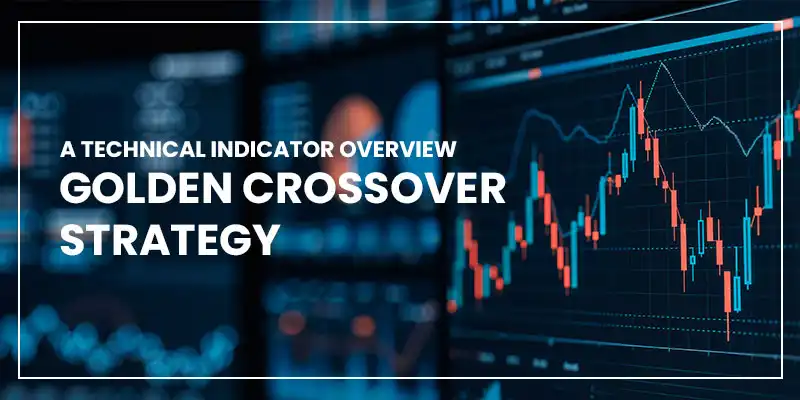The Golden Crossover Strategy is a technical indicator framework focusing on the relationship between two moving averages. This framework arises when a shorter-term moving average shifts above a longer-term moving average. It is commonly referenced as a potential indicator that has historically coincided with changes in price behavior. The crossover is one among many tools in technical analysis and should be used in conjunction with other evaluations. The purpose of this article is to present a detailed explanation of the strategy, its formation, interpretation, and inherent considerations for traders.
Contents
- Concept and Formation
- Signal Interpretation
- Advantages and Limitations
- Risk Considerations
- Conclusion
- FAQs
Concept and Formation
The essence of the Golden Crossover Strategy lies in the mathematical relationship of moving averages. Typically, the strategy involves a short-term moving average (such as a 50-day average) and a long-term moving average (such as a 200-day average). The crossing event occurs when the shorter-term line moves upward and crosses the longer-term line. This formation is noted as a potential indication that the price movement is shifting in a manner that calls for further observation.
The strategy is built upon historical price data and smooths the price fluctuations over specific durations. By minimizing day-to-day volatility, the moving average lines provide an averaged trend that is easier to interpret for longer periods. The crossing of these lines is recognized due to the mathematical convergence and divergence between the two averages, a concept extensively used in technical analysis.
Note: This strategy is based on observing moving averages and does not provide definitive forecasts. It reflects only past price behavior and may not account for broader macro or fundamental factors.
Read Also: How Is The Premium Of An Options Contract Calculated
Signal Interpretation
When the short-term average crosses above the long-term average, interpreted as an indication that historical price data may reflect changes in momentum. This is one of many non-definitive indicators and does not imply a prediction or trade recommendation. As a descriptive indicator, the crossover events contribute to the analysis of market rhythm. Observers note that the formation is consistent with historical instances where similar crossovers have coincided with observable shifts in market behavior.
It is essential to understand that the crossover is not an isolated indicator. Instead, it is one aspect of a broader analysis where additional tools and trends are evaluated. The strategy’s signal interpretation is based on the moving average relationships without implying certainty regarding future price performance. The description here is solely an exposition of the formation and the observed phenomena that support its identification.
Advantages and Limitations
The primary advantage of studying the Golden Crossover Strategy is the simplicity of its formation. The approach is based on fundamental mathematical relationships, making it easy to compute and track over time. Additionally, the overall trend becomes more apparent by condensing complex price data into two average lines.
Conversely, the strategy carries limitations. Sole reliance on moving averages may ignore other relevant market factors. It does not account for volume or other fundamental indicators. Furthermore, during periods of market consolidation or sideways trends, the crossover may generate signals that require careful interpretation. In such cases, the crossover event is only one of several factors considered in evaluating broader market behavior.
Note: Users should note that while the crossover is easy to visualize, its effectiveness varies across different market conditions and is not intended to serve as a predictive or standalone trading method.
Risk Considerations
While the strategy describes a method to identify trend changes based solely on moving average interactions, it is essential to note that its signals are derived from historical price data. Variations in market behavior may lead to crossovers that do not correspond with definitive trend changes.
Consequently, observers should be aware that this approach represents just one aspect of technical analysis. The discussion provided here is for informational purposes only and does not account for all external factors that might impact overall market performance.
Read Also: Risk Management In Options Trading
Conclusion
In summary, the Golden Crossover Strategy presents an approach based on moving average interactions that highlights historical price trends, offering a simple framework to identify potential shifts in market momentum visually. This technique forms one aspect of broader technical analysis without implying certainty about future outcomes. It should be viewed as an informative indicator rather than a stand-alone predictive tool.
Disclaimer: Investment in the securities market is subject to market risks. Please read all scheme-related documents carefully before investing. The information provided in this article is for educational and informational purposes only and is not intended as investment advice. Trading in derivatives, including options, involves substantial risk and is not suitable for all investors. Past performance is not indicative of future results. Readers are advised to consult with their financial advisors before making any trading decisions.
FAQs
It functions reliably as an analytical tool to observe the interaction between short-term and long-term moving averages, effectively highlighting potential changes in overall market momentum.
Yes, supplementary tools, including oscillators, volume indicators, and trend lines, integrate with the crossover strategy to provide enhanced market context and analytical perspectives for clarity.
Traditional implementations rely solely on price-based moving averages. Some approaches may consider volume or additional factors, but the core calculation remains independent of volume data.

